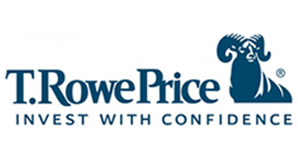In implementing the A3 Modeling, PlainsCapital gained a faster, easier, and more accurate way to develop and access corporate wide data. Processes which used to take a week to produce data, are now accomplished in an hour.

PlainsCapital grew from a community bank to a nationwide financial institution with US $5.7 billion in assets and operations in 40 states.
As it did so, it outgrew the financial reporting system that had helped fuel its success. The data from its three operating companies was difficult and time-consuming to consolidate, update, and analyse. To overcome these challenges, PlainsCapital adopted the scalable, enterprise-class corporate performance management software from A3 Solutions. This was a smart move, the consolidation of financial statements and generating cost allocations used to take three days and now is quickly completed in an hour. Once completed, the data is instantly available to create detailed reports that can be easily and thoroughly analysed. As a result, executives and managers can quickly spot trends and make better, data-driven decisions.
Before A3 Modeling
When the current ownership group acquired PlainsCapital in the late 1980s, the financial reporting process was relatively straightforward. The corporation’s key holding was Plains National Bank, a Lubbock, Texas based commercial bank with nearly US$200 million in assets. There was one general ledger, one chart of accounts. Budgeting, reconciliation, and allocations processes were maintained in a series of spreadsheets and disparate thirdparty applications. Both managers and executives used these simplistic tools to plan the corporation’s growth. They planned well. PlainsCapital now includes not only the original bank—renamed PlainsCapital Bank— but also two major subsidiaries, First Southwest and PrimeLending. These separate operating units enabled the corporation to expand its public finance advisory, investment banking, and mortgage lending lines of business. PlainsCapital had moved to Dallas and grown throughout Texas and beyond into 40 states. Its assets had increased by an enviable 14.4 percent compound annual rate over the intervening 24 years, quickly reaching $5.7 billion.
Far From Easy
PlainsCapital was a success, but its financial reporting was now increasingly complicated to manage. Each of the three operating companies ran on independent—and inconsistently structured—financial reporting systems, making aggregation of corporate data a time-consuming and laborious manual process with a high potential for error.
“It Was Not Efficient”
“Our financial reporting system worked, but it required a lot of duplicative effort,” says Aaron Taylor, Senior Vice President and Director of Financial Planning and Analysis for PlainsCapital. “We were taking data that was already in an accounting system, putting it into another accounting system, and running consolidations. It was not efficient.”
Because data was delivered in fixed spreadsheets, it was impossible to update it when new or corrected information was available. To communicate the changes, the accounting department had to distribute a new round of spreadsheets to the team.
It was time for the capabilities and reach of the financial reporting system to reflect the growth of PlainsCapital. Without making this change the system risked becoming a barrier to the corporation’s continued growth and success.
After A3 Modeling
To gain the cross-company capabilities they need, Taylor and his colleagues required a new financial reporting system. Their requirements set the bar high and quickly eliminated many potential solutions. They needed a universal—or corporate wide—reporting hierarchy that would integrate data from the three operating companies. They also wanted to maintain the existing, distinct systems already in place at those companies, rather than having to rip-andreplace entire systems. “That was a big deal for us,” says Taylor.
The company also wanted to have multiple reporting hierarchies that would present data in different ways and be optimized for different purposes, such as internal management reports, SEC reporting, and regulatory reporting. The solution had to be highly customizable. “We didn’t want to adapt our processes to suit the software,” says Taylor. “We wanted a solution that could be built around the way we run our business.”
PlainsCapital considered financial reporting solutions from companies such as IBM/Cognos, SAP, Tagetik, and Prophix. Some of these providers did not offer the level of customization and adaptability that customization they needed but at prices that the company considered too high, or were on design and deployment schedules that it considered too long.
“We Didn’t Have to Change a Thing”
PlainsCapital turned to A3 Solutions, a Microsoft Gold Certified Partner. “A3 gave us the capabilities of scalable, enterpriseclass corporate performance management software from the largest vendors—but at our price, on our schedule, and fully adaptable to our business processes and accounts,” says Taylor. “We didn’t have to change a thing. They even added functionality that we requested during design and deployment.”
“To adopt A3, we took advantage of Microsoft software that we already license and in-house expertise that we already have,” says Taylor. “And the solution was highly flexible and intuitive for our employees. All that made the decision a no-brainer.”
Benefits
PlainsCapital now produces consolidated financial data quickly, more reliably, and with greater detail than ever before. The team can easily spot trends, make better decisions, and avoid unwelcome surprises.
Consolidated Data Produced in an Hour, Down from a Week
By implementing A3 Modeling, PlainsCapital gained a faster, easier, and more accurate way to develop and access corporate-wide data. For example, the monthly reports on actual versus budgeted expenses, which used to take days to produce, are now generated in less than an hour.
The 150 cost-center managers see their reports a week closer to the monthly close, allowing them to use the data to make more timely decisions. Not only do managers see their results much sooner, but they can explore the details behind the data from various perspectives in ways that weren’t possible in a fixed, spreadsheet-based reporting environment. Similarly, the consolidation and cost-allocation process which took three accounting personnel a full day to produce is now completed by one employee in an hour.
PlainsCapital now sees speedier data aggregation and analysis in other ways. One senior executive used to take the spreadsheets for the various cost centers under his management and manually consolidate them into one spreadsheet to make comparisons. The process took hours and was prone to error. Now, the integrated spreadsheet is generated automatically, in seconds.
Executives and managers also access current data anytime they need it, minimizing the need for the accounting staff to run custom reports. The accounting staff saves time, and the executives and managers get their custom reports more quickly.
“We use A3 Modeling to free up time that everyone used to spend on manual reporting,” says Taylor. “Our executives spend less time running reports and more time running the business. Our staff can respond more quickly and fully to requests that really require their involvement, such as analyzing results.”
Trends Spotted Faster with Greater Analysis Tools, Accuracy
Accessing data quickly is just one benefit of PlainsCapital’s new financial reporting solution. Getting more detailed data is another. Managers and executives don’t get just the fixed, high-level consolidations they were accustomed to seeing. They also can click through the data to see and work with the more granular information behind it. They can examine details from different perspectives and conduct “what if” analysis to understand the impact of potential changes on the data.
Now, the data is more accurate and reliable than before, according to Taylor. “We were already doing cost allocations, but partly in Excel, partly in our core financial system, partly in separate databases. The data was all over the place. We’d pull data from different sources and it didn’t always reflect the same information. Now, all our results are in one database, and all the data can be reported against each other. This is way beyond what we had before.”
For PlainsCapital, the key benefit of the solution is the ability to forecast financial trends. “The biggest difference we see with this solution is that we’re able to detect favorable and unfavorable trends faster, because we can see levels of detail that were hidden before and because we have more confidence in the accuracy of the information,” says Taylor. “With A3 Modeling, we understand the business better, we see the path ahead better, and there are fewer surprises.”
For example, the finance team has started producing detailed forecasts for each operating unit, loading the projections into the model and running the consolidation process against the forecast. The ability to forecast at such a granular level and consolidate the projections would have been impossible’ before.
Solution Deployed Three Times Faster, 44 Percent Cheaper
PlainsCapital acquired the A3 Modeling for about 44 percent of the cost of the IBM/Cognos solution it was considering considered, saving hundreds of thousands of dollars without sacrificing performance. Part of that savings came from the reliance on existing Microsoft licenses and in house expertise. Another part came from the ability of A3 to use the corporation’s existing financial systems and processes, eliminating the need to replace systems and rewrite code.
Additional savings were also realized from the speed at which A3 was able to deploy the solution. PlainsCapital kicked off its annual budget process with A3 two months after deployment. Taylor says that it would have taken four to six weeks just to begin deployment planning with IBM/Cognos, and that a full deployment of that system would have taken six to eight months.

 A3 Solutions
A3 Solutions 



